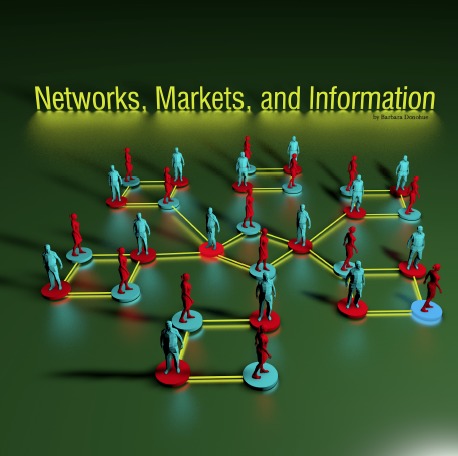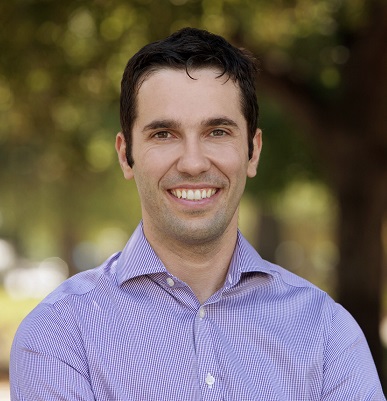

LIDS alumnus Kostas Bimpikis likes to know how networks work, especially networks that include human agents.
A self-described "operations guy", Kostas says, "Studying networks is natural for the field of operations. There has been a long tradition of studying physical networks like telecommunications. Networks that involve humans are more complicated. The questions are very different. People aren't passive agents like computer switches. They are active and you have to take their incentives into account."
"Most of my research revolves around the study of social networks, and specifically how social peers affect what we know, what we have access to, and what decisions we make," says Kostas.
Kostas investigates the role of a social network's structure on how information is obtained and shared among peers. Dense networks tend to be better at aggregating dispersed information than less connected, more clustered networks, he says. Right now he does this work at the Graduate School of Business at Stanford University, where he has been an assistant professor of operations, information, and technology since 2011.
However, Kostas's love of learning began at an early age. Kostas grew up in Xanthi, a small city in northern Greece near the Turkish border. His father worked for the Greek public telecommunications company and his mother taught in high school. His parents had both studied physics in college and instilled in Kostas a strong desire for a good education. This, he says, is one of the main reasons he ended up at MIT.
In 2003, Kostas received his undergraduate degree in electrical engineering from the National Technical University of Athens, Greece. He received an MS in computer science from the University of California, San Diego in 2005 and then enrolled at MIT, receiving his PhD in operations research in 2010.
When he first came to the US to study computer science at UC, San Diego, Kostas had no idea what operations research (OR) was. However, the father of a close friend had a PhD in OR and introduced him to the field. This led him to explore it more thoroughly at MIT.
"I was very, very lucky to find Asu Ozdaglar [a professor in Electrical Engineering & Computer Science, current director of LIDS, and associate director of IDSS]," says Kostas. "We started to work closely together, and my other advisor, Daron Acemoglu [Professor of Economics], joined in the work."
During his time at MIT, Kostas was part of both LIDS and the ORC (Operations Research Center). This is when he began studying social networks. The motivation for this line of study while at MIT came from the increasing availability and importance of social media. "When I started work on my PhD, social media were coming into prominence," Kostas says. Facebook had its initial public offering; Twitter was gaining momentum.
A central question that occupied his research was: What is the impact of social media on the welfare of participants, given that these technologies make information exchange easier and faster? "We wanted to use our understanding of network theory," Kostas says, "to look at things like how a company can use data on network structure and the interaction among customers to maximize product adoption or revenue."
Targeted advertising offers another application. For instance, suppose two firms are competing. How do they allocate their budgets to maximize the impact on their customers?
The applications are not limited to business. "You can also use this line of work in exploring ways to maximize the impact of a limited budget for a social cause. Our main goal is to provide a theoretical framework to support such applications," Kostas says.
Lately, Kostas has been working on applying similar ideas to supply chain networks. For example, Toyota has a large, multi-tier supply chain that spreads to several geographical locations and is subject a variety of disruptive events. How do these disruptions propagate? How can the company work with its supply chain to mitigate these risks?
Another facet of Kostas's work is examining dynamic learning in the context of research and development (R&D). "Imagine you and I are working separately toward a goal that no one knows for sure is achievable, such as building a driverless car," Kostas says. "If we can see each other working, each can see the other succeeding or failing. Every time you see me failing, that makes you pessimistic about your own prospects. You say, 'This guy is smart, he's skillful, but he's failing. Maybe that means the problem we're trying to solve is not solvable.' This effect might bias us away from putting effort toward achieving the goal."
The research shows that this effect is dominant, Kostas says, "so it might be optimal for us not to observe each other."
The ultimate goal is to think of R&D in a dynamic framework and explore how to optimally design regulations that could aid the process of innovation.
Since Kostas has such interdisciplinary interests, he has appreciated the opportunities available from LIDS and ORC. "I benefited a lot from being in a place like LIDS. Nobody can know everything, but collectively, people at LIDS know a lot. There is a high concentration of intellectual capital. That was great about LIDS and ORC. I had desks in both, so I benefited from both and from MIT as a whole."
"If I had to summarize what I liked about LIDS, ORC, and MIT, it would be the academic freedom. You can pursue pretty much whatever you want and do not have to stay within a single academic department." This was certainly true in his case. "Working with an engineer and an economist," Kostas says. "There are not very many places you can do that."
